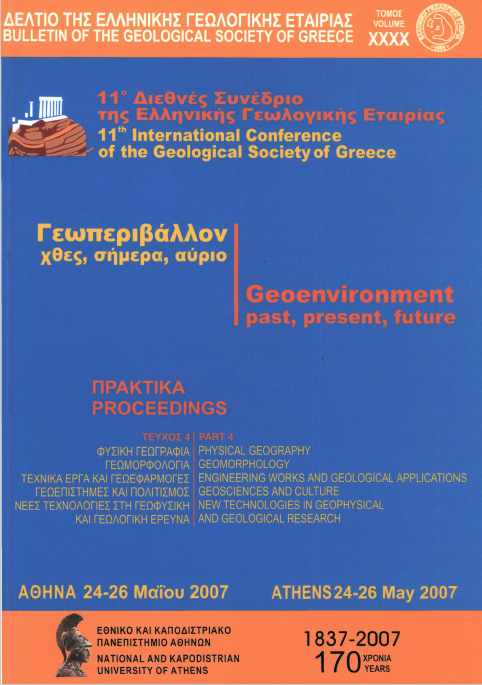A COMBINED STUDY OF FLOOD PROPAGATION MAPPING, USING SENTINEL-1 AND LANDSAT-8 DATA. A CASE STUDY FROM RIVER EVROS, GREECE

Abstract
Floods are suddenly and temporary natural disasters, which influence equally important the society and the natural environment, affecting areas that are not normally covered by water. In the context of flood mapping, different remote sensing techniques may contribute in a sufficient and effective way. This paper deals with mapping the spread of water bodies from natural levees of the river Evros and therefore the flood event on the surrounding areas of the river. In this work, radar data from Sentinel-1 mission as well as optical data from Landsat-8 were utilized. Specifically, Sentinel-1 data before flood events were treated with respectively during flood, yielding an image which reflects the propagation of the event. Moreover, Landsat-8 data were acquired with the aim of identifying and mapping of flooded areas, utilizing the Normalized Difference Water Index calculation. The results of the two methods were compared and flooded areas were evaluated.
Article Details
- How to Cite
-
Kyriou, A., & Nikolakopoulos, K. (2016). A COMBINED STUDY OF FLOOD PROPAGATION MAPPING, USING SENTINEL-1 AND LANDSAT-8 DATA. A CASE STUDY FROM RIVER EVROS, GREECE. Bulletin of the Geological Society of Greece, 50(3), 1711–1720. https://doi.org/10.12681/bgsg.11894
- Section
- Remote Sensing and GIS

This work is licensed under a Creative Commons Attribution-NonCommercial 4.0 International License.
Authors who publish with this journal agree to the following terms:
Authors retain copyright and grant the journal right of first publication with the work simultaneously licensed under a Creative Commons Attribution Non-Commercial License that allows others to share the work with an acknowledgement of the work's authorship and initial publication in this journal.
Authors are able to enter into separate, additional contractual arrangements for the non-exclusive distribution of the journal's published version of the work (e.g. post it to an institutional repository or publish it in a book), with an acknowledgement of its initial publication in this journal. Authors are permitted and encouraged to post their work online (preferably in institutional repositories or on their website) prior to and during the submission process, as it can lead to productive exchanges, as well as earlier and greater citation of published work.







